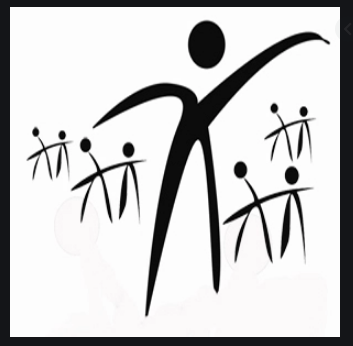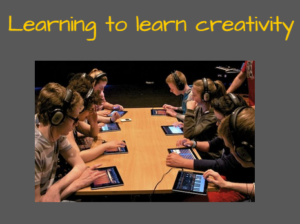What is your choice for the top learning issues of the day? Secrets of creative learning are one of our choices. Taught in schools? We have not found many that teach it. We were very surprised by this finding.
Tomorrow’s illiterate will not be the man who can’t read: he will be the man who has not learned how to learn.
–Herbert Gerjuoy
Check out our thoughts on building innovation.
In earlier times, perhaps several generations or so ago, our great-grandparents and their parents faced an entirely different problem of learning to learn creativity.
In their environment, both generations shared the same problems and basically the same solutions.
Learning creativity in this environment was not a priority. Learning was simply a matter of transferring information (facts) from the older generation to the newer one.
Enter the industrial age where the world had begun to change very rapidly and grow in complexity.
Old solutions, old facts, were no longer enough. Learning needed to change to keep up, switching from learning old information to discovering and understanding new information, and being creative with new ideas. Clearly, a paradigm shift had begun.
Related: How You Are Destroying your Creativity and Imagination
In the information and internet age, learning problems have gotten much worse. The amount of new technical information is doubling every 2 years … doubling. We are clearly living in exponential times.
So how do we improve our ability for learning creativity in such a complex environment? We have defined 8 ways we believe are essential to achieving this goal. Let’s discuss each of these:

Learn by doing
Most of what we know, we didn’t learn in school. We learned it in the real world, actually doing, not reading or listening to about doing.
Confucius once said: I hear, I forget. I see. I remember. I do, I understand.
He appreciated that being a creator was the best way to learn. Make your learning be active learning and be creators as often as possible. We believe this the most critical of the 10 ways to improve your learning.
Learn creativity … create curiosity
If we have the guts to think about what we don’t know, confuse our learning, perplex ourselves, and evoke real questions, we can create curiosity. This curiosity can be used to tailor robust methods of blended learning and creativity.
Curiosity must come first. Questions can be fantastic windows to great learning, but not the other way around. Build your skill of curiosity … it is a necessity for good learning as well as creativity.
Creative learning … practice imagination
Albert Einstein once said: Logic will get you from A to B. Imagination will take you anywhere.
He understood the complexities of the world today required imagination for the discovery of new ideas and solutions. Imagination requires lots of practice; it doesn’t just happen on its own.
So start working on this skill to add it to improve your learning.
Observe and reflect
By observing life’s experiences around us and careful reflection of what we observe, we can gather facts and information to learn new solutions and methods. Increase your ability to ‘connect the dots’ around you.
Take notes and revisit them often.
Embrace the mess of learning creativity. In this new world of continuous learning, we are all teachers as well as learners. We realize learning is often an ugly task. Accept that the process of trial and error is an acceptable learning process.
Here is an interesting article: 5 Surprising Ways Sleep Makes You More Creative

Employ novelty
Our brains pay more attention to things in the environment that are new to our experience.
So, seek out as many new experiences to try as you can handle and become an explorer. Learn from others’ creativity.
Change and contrast
People learn new things best when they are in contrast to other information in the environment or to things that are in contrast to previous experiences.
To improve creativity, work on your experience of change. Step out into the unknown as often as you can.
Connect and collaborate
Connecting with others in the internet world is a great way to share ideas and solicit feedback, new views, and ideas. Once you have found some interesting connections who share goals, try a collaboration project or two, especially ones on creativity.
Collaboration is an excellent way to expand learning in a sharing environment.
We have found two cool examples of leaning creativity recently that we will share. Here is the first:
In 2009, scientists from the University of Louisville and MIT’s Department of Brain and Cognitive Sciences conducted a study of 48 children between the ages of 3 and 6. The kids were presented with a toy that could squeak, play notes, and reflect images, among other things.
For one set of children, a researcher demonstrated a single attribute and then let them play with the toy.
Another set of students was given no information about the toy. This group played longer and discovered an average of six attributes of the toy; the group that was told what to do discovered only about four.
A similar study at UC Berkeley demonstrated that kids given no instruction were much more likely to come up with novel solutions to a problem.
The second example is a piece of creative work from a high school student:
Hold onto your seat; don’t blink your eyes for a second! This is amazing. seventeen-year-old Joe Bush got a high school assignment to make a video reproduction. He chose history as a theme and tucked it all into two minutes.
He took pictures from the internet, added the track Mind Heist by Zack Hemsey and voila you have a very creative video.
You should watch this 2 minute video here.
Congratulations to Joe AND his teacher. You learn creativity by doing, don’t you?
The bottom line
If we as learners embrace the new paradigm of active learning, curiosity, and imagination, we could offer a spark to others around us and may even build a new movement.
The most explosive period of learning creativity occurs in the first years of life before we learn to read. There are lessons in that fact that our fixation on reading, and our stubborn insistence that play, art, music, theater, dance, and so on, are ‘frills’, keep us from understanding and appreciating.
Schools are still being built with classrooms rather than flexible workspaces.
Schedules are still being imposed that keep kids in their seats and isolated from the larger world for most of every day. We’re ignoring research and common sense about how humans learn. So what is really new with that?

Need some help in improving the creativity of you and your staff? Creative ideas to help the differentiation with your toughest competitors.
All you get is what you bring to the fight. And that fight gets better every day you learn and apply new creative ideas.
When things are not what you want them to be, what’s most important is your next step.
Try. Learn. Improve. Repeat.
Are you devoting enough energy to improving your creativity, innovation, and ideas?
Do you have a lesson about making your creativity better you can share with this community? Have any questions or comments to add in the section below?
Mike Schoultz is the founder of Digital Spark Marketing, a digital marketing and customer service agency. With 40 years of business experience, he blogs on topics that relate to improving the performance of your business. Find him on Twitter, and LinkedIn.
Digital Spark Marketing will stretch your thinking and your ability to adapt to change. We also provide some fun and inspiration along the way.
More reading on creativity from Digital Spark Marketing’s Library:
10 Different Ways to Enhance Creativity
Secrets to Understanding the Genie in the Creativity Bottle
How You Are Destroying your Creativity and Imagination
13 Motivators for Creating a Change and Adaptability Culture
7 Imaginative Secrets of Creative Learning We Must Support


